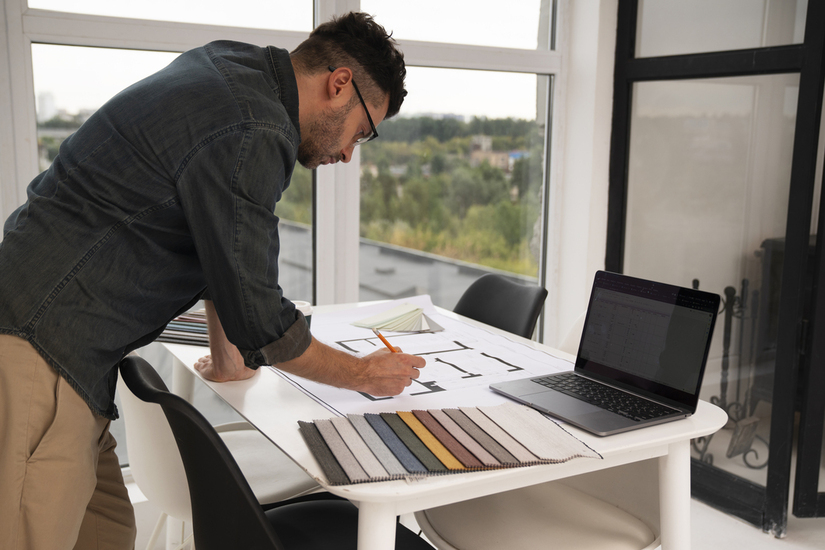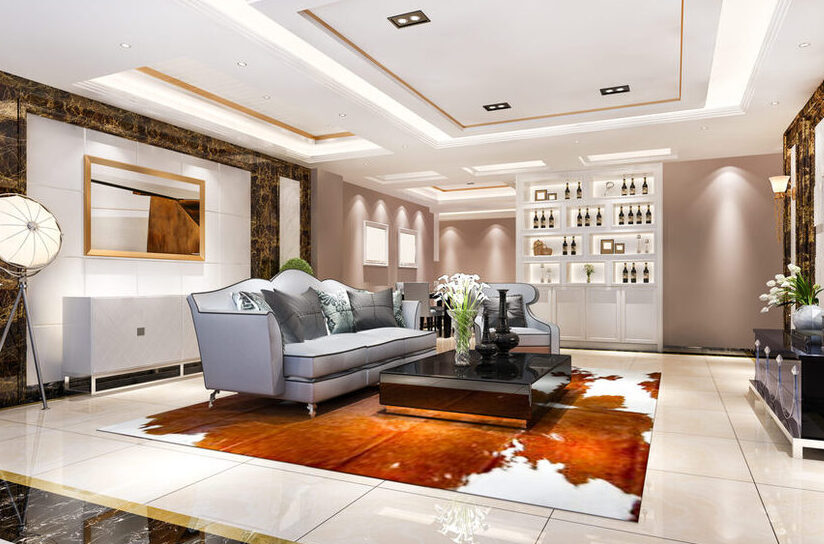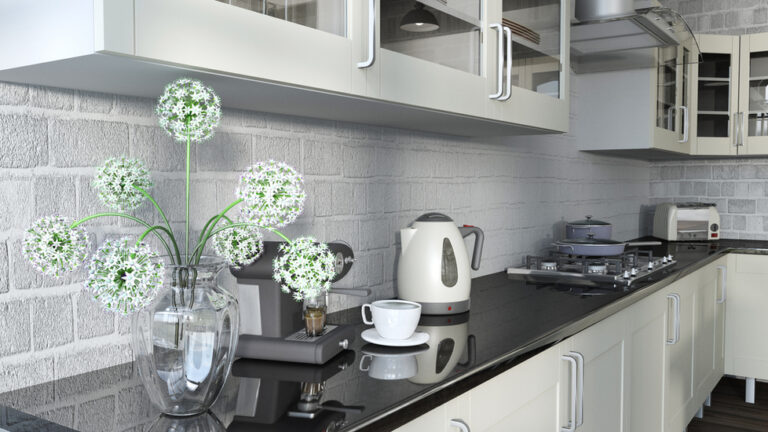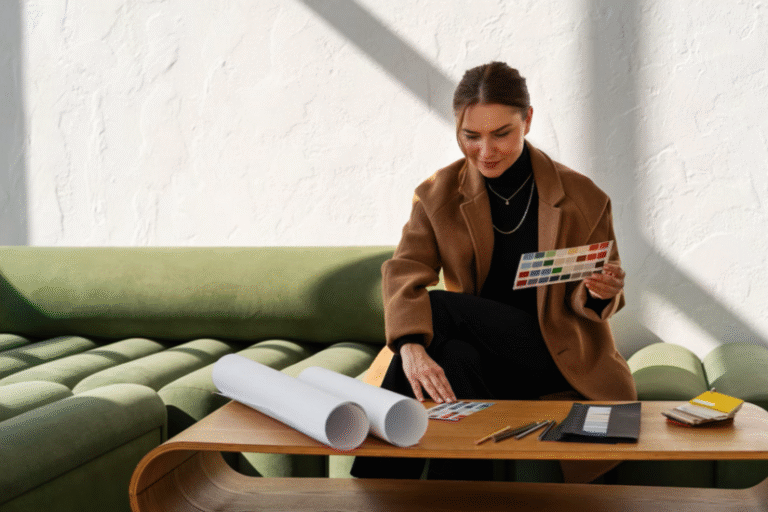When you step into a space where everything feels just right, you know seamless interior design is at play.
That’s not about having the perfect couch or the perfect lighting. It’s about how every element in that space, every piece of furniture, every color, every texture, works together in harmony. Visually and practically.
That harmony makes a home feel balanced, thoughtful, and calm-but-not-boring. It’s connected, yet never repetitive. Where nothing feels out of place. Where you can live, move, and be.
What Does Seamless Design Mean?
It means continuity. Not sameness. You can have a different look in every room, but the transitions between them should feel smooth. Shouldn’t jar you. It shouldn’t feel like an afterthought.
A seamless interior looks good. But more than that, it works. It’s built around how you live, move, and breathe in your home. Purpose over aesthetics. That’s what makes it truly seamless.
There are some key principles when it comes to interior designs which you should consider. That’s especially true in open-plan homes, modern apartments, and houses where rooms are connected by sight. In those cases, how you tie those spaces together is just as important as how they look on their own.
Start With A Clear Vision
Designing a space that feels truly great starts with understanding what you want to achieve with it. That means thinking about how you live in it, how you entertain, work, and rest. Your space should reflect those needs, in both its layout and decor.
When you have a clear idea of what you want your space to do for you, decision-making gets a lot easier.
You can define your interior style, modern, rustic, Scandinavian, or something entirely personal, and use that as your guide. A mood board or a folder of images can help keep you focused and on track.
Your vision should be your guiding light. It helps you pick colors, materials, furniture, and accessories that work together. And that’s where the magic happens.
You can practice working on DIY brick projects and other stuff to master your expertise and improve your skills. This way, you can train your brain to brainstorm better ideas regarding both interior and exterior.
Keep Colors And Materials Consistent

Visual flow is all about sticking to a consistent color palette. That doesn’t mean every wall has to be the same shade.
Choose a base color and a few accents that you can use throughout the space in different ways. Warm neutrals as your foundation, soft greens or muted blues as accents, those colors can show up in paint, fabrics, tiles, or even small details like vases or cushions.
Materials matter just as much as color. If your kitchen has oak cabinets and natural stone countertops, you might want to see those textures echoed in your dining or living area. A wooden coffee table or stone decor on a shelf can help link the spaces visually.
Too many finishes competing for attention in one area can make the space feel chaotic.
Plan The Layout With Flow In Mind
Furniture placement has a huge impact on how a space feels. A good layout encourages movement without obstacles and keeps different zones connected without losing their purpose.
When you’re working with an open-plan space, pay attention to what you see from one area to the next. Do you have a visual connection, like matching tones or complementary furniture styles? Those details do matter.
Choose furniture pieces that share similar materials or shapes. A dining table with black metal legs pairs nicely with bar stools in the same finish. Those links help tie spaces together, even when their functions are different.
Rugs, lighting, and artwork can define zones without breaking the flow. Just make sure each item fits the bigger picture.
Use Lighting To Guide The Space
Lighting doesn’t just help you see, it sets the mood and defines each space. To create a seamless look, use the same lighting style throughout the home.
That doesn’t mean every fixture has to match, but they should feel like they are from the same family.
Stick to one or two finishes for lighting fixtures like brushed brass or matte black.
Try to keep the color temperature of your bulbs the same. Warm light feels more welcoming, while cooler tones are better for task areas like kitchens and workstations.
Layering your lighting helps the space feel complete.
Use a mix of ambient light (ceiling fixtures), task light (under-cabinet lights, lamps), and accent light (like LED strips or sconces). This adds depth and function without overwhelming the design.
Pay Attention To Architectural Details
The smaller architectural details make the biggest difference in seamless interiors. These are baseboards, trim, door frames, and transitions between flooring types.
Keeping these consistent in style and color helps the space feel cohesive even when moving from one room to another.
If you have open transitions between rooms, consider how the materials flow. Wood flooring to tile can work, but make sure the tones match. Too much contrast can break the flow unless it’s intentional and balanced.
Wall finishes and textures should also be considered. If one room has flat white walls and the next has bold wallpaper or heavy paneling, it can feel disconnected. Aim for subtle transitions that feel natural to the eye.
Make Function Part Of The Flow
Interior design isn’t just about looks. A seamless space also functions well. That means creating a layout where the use of each space makes sense concerning the next.
Think about how people move through the home. If your kitchen flows into the dining room, make sure the furniture and layout make serving and eating easy.
If your hallway opens into a living room, consider how storage, lighting, and decor can connect the two.
Clutter breaks flow more than color or furniture. Built-in smart storage that keeps surfaces clean without feeling sterile. Use furniture that suits your lifestyle, not just the style you’ve chosen.
Smart Tech Can Stay Stylish
Technology is part of modern living, but it doesn’t have to be the star of the show. When designing the seamless interiors, look for ways to hide the tech.
Use in-wall controls or central apps to manage lighting, sound, or temperature. Hide cables with built-in channels or furniture designed for media. Even things like speakers or thermostats now come in finishes that match your decor.
This balance of tech and design keeps the home feeling current without looking too high-tech or cluttered.
What To Avoid When Designing For Flow

Even the best design ideas can fall apart if there’s no plan. One common mistake is mixing too many styles in a small space. While contrast can be powerful, industrial stools next to a farmhouse table with coastal decor can confuse the space more than connect it.
Another mistake is ignoring how rooms connect. If your hallway has a different color and floor than every room it touches, the home can feel chopped up. Small spaces need even more visual flow to feel spacious and connected.
Comfort matters too. A seamless space still needs to be livable. Don’t choose chairs that look amazing but feel terrible, or lighting that looks cool but gives you a headache. Design should support your life, not fight against it.
Final Thoughts
Designing seamless interiors doesn’t mean every room has to be the same. It’s about making intentional choices that connect each space in a way that feels natural.
When everything works together, colors, furniture, lighting, and layout, you have a home that feels welcoming and complete.
Start with a clear vision, focus on what matters most to you, and take your time with the details. Great design isn’t about perfection. It’s about making your space feel like it’s yours and every part of it belongs together.





